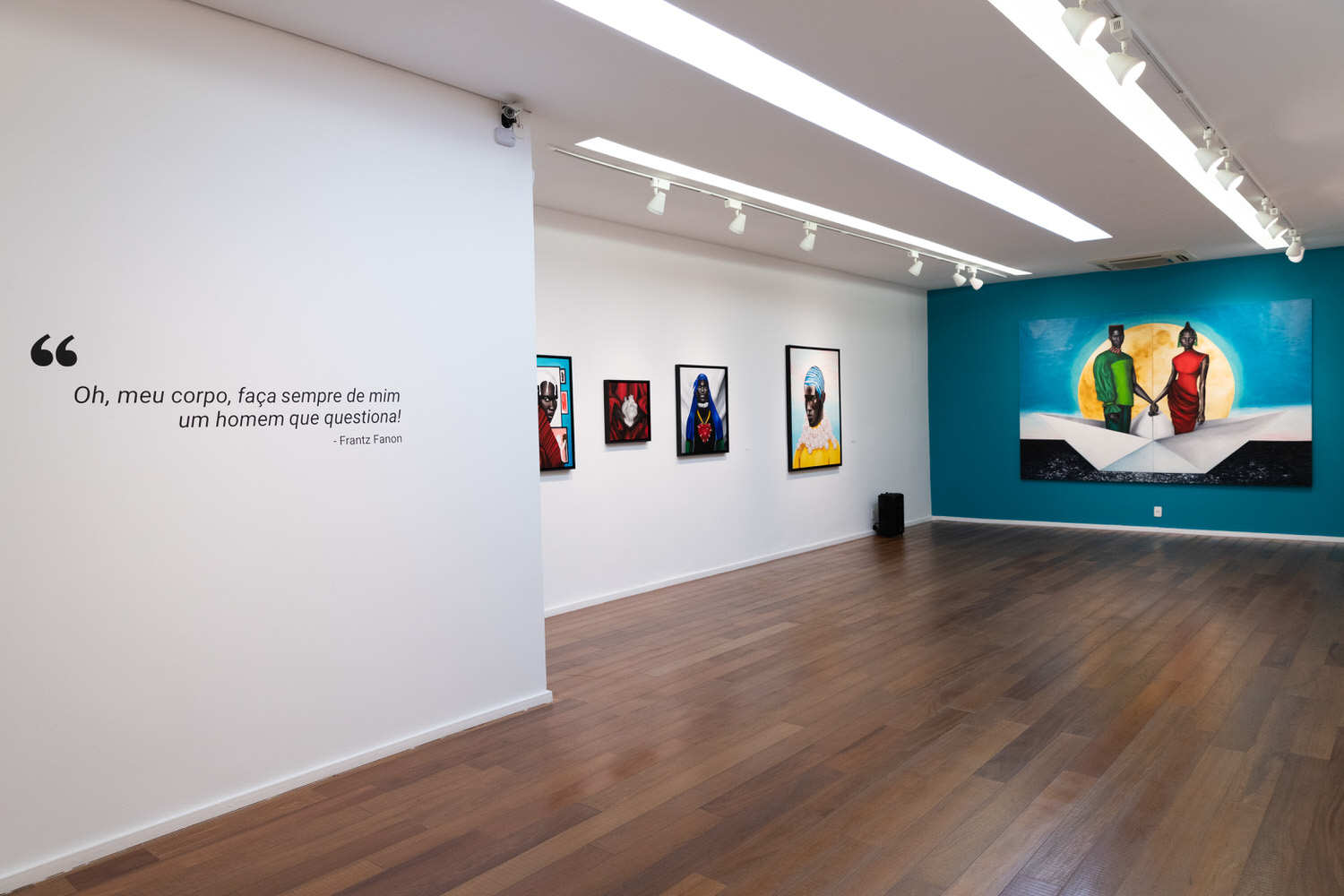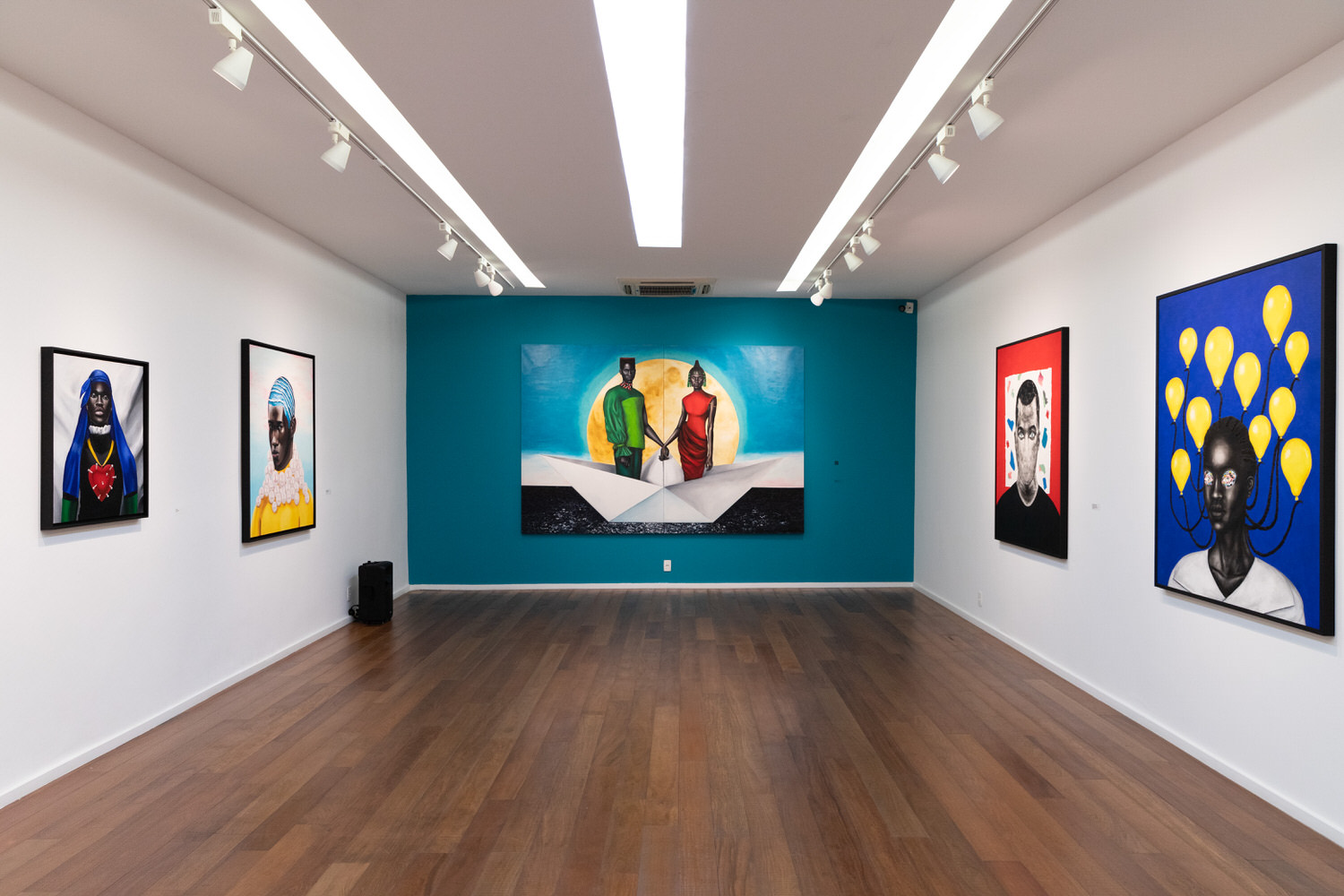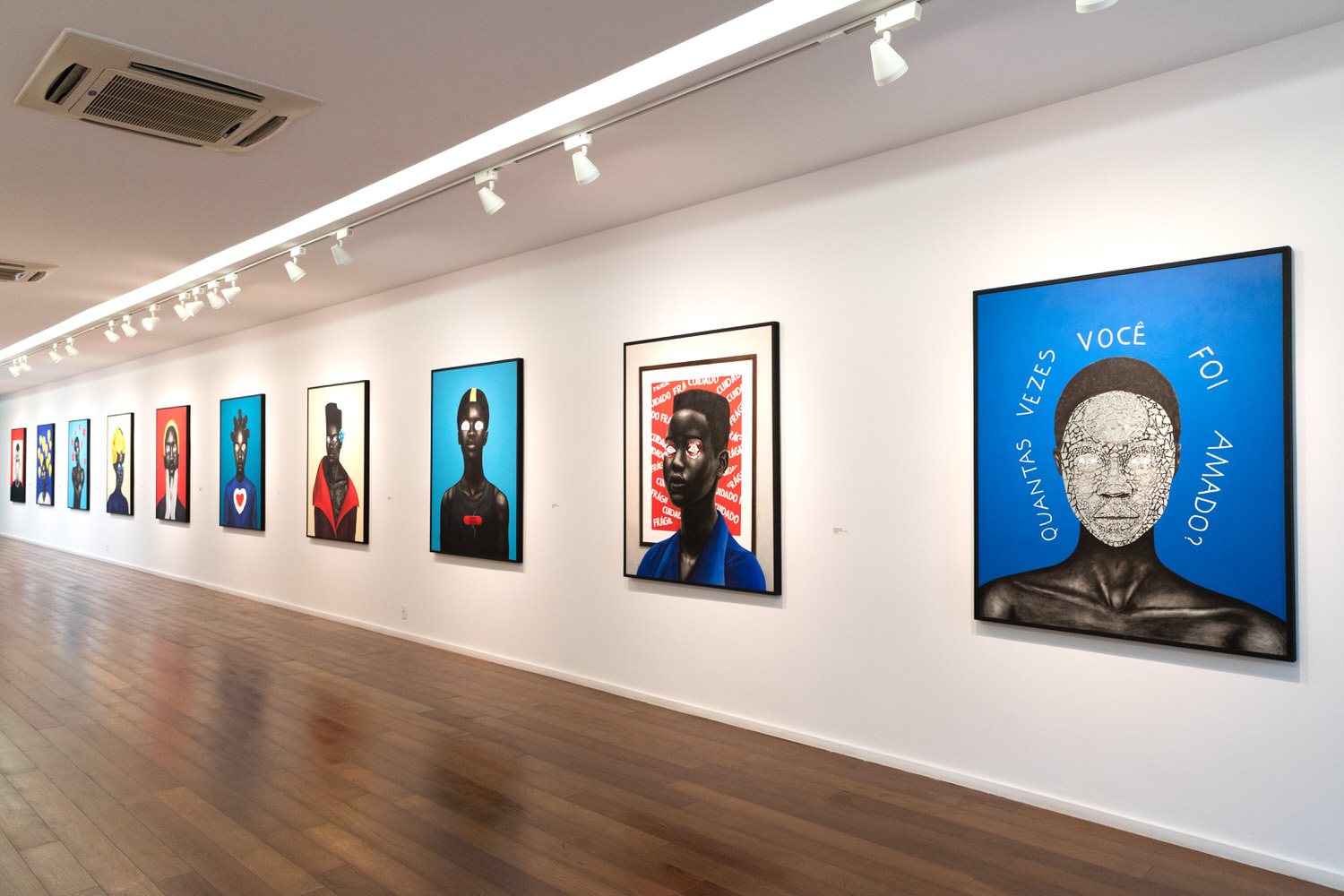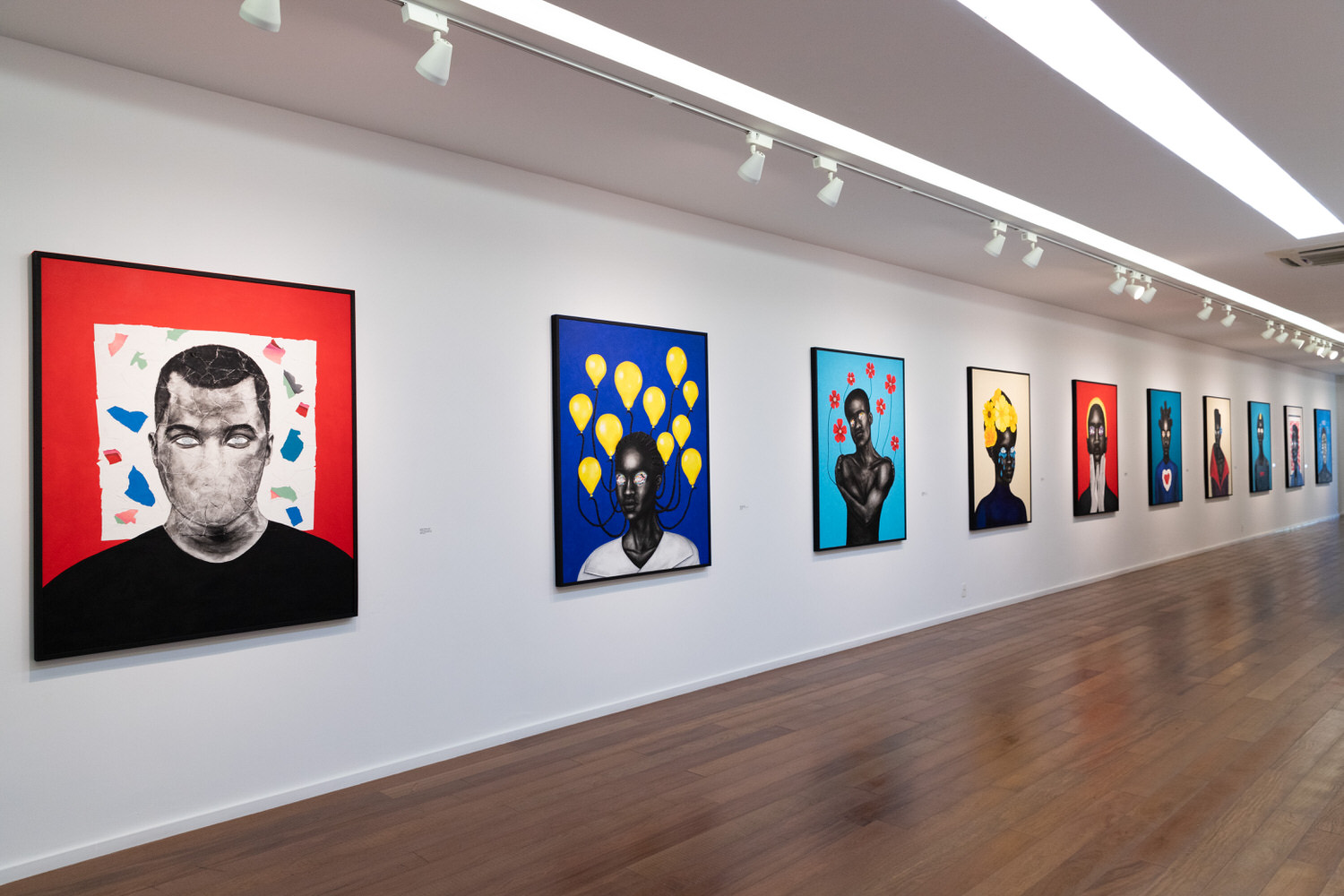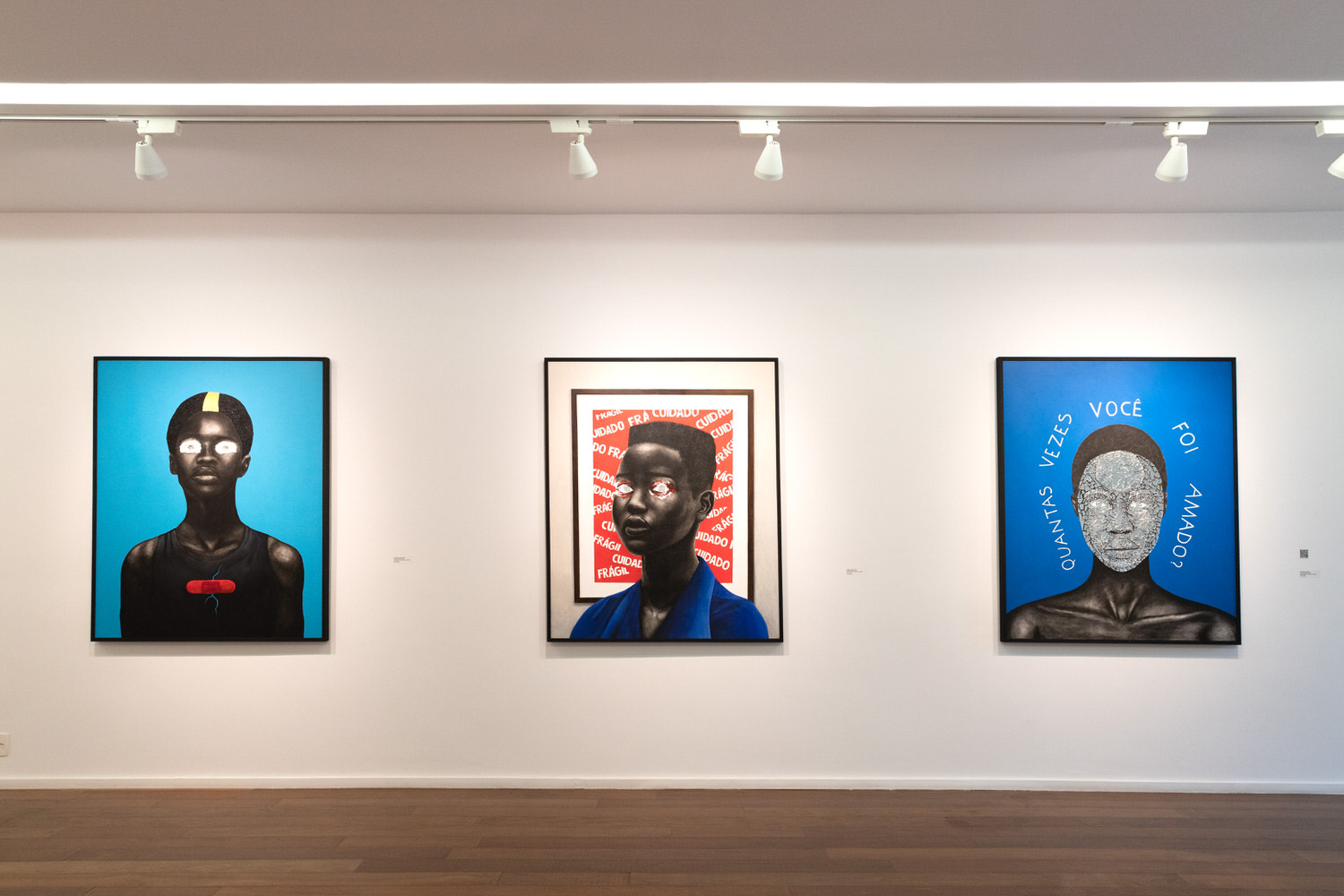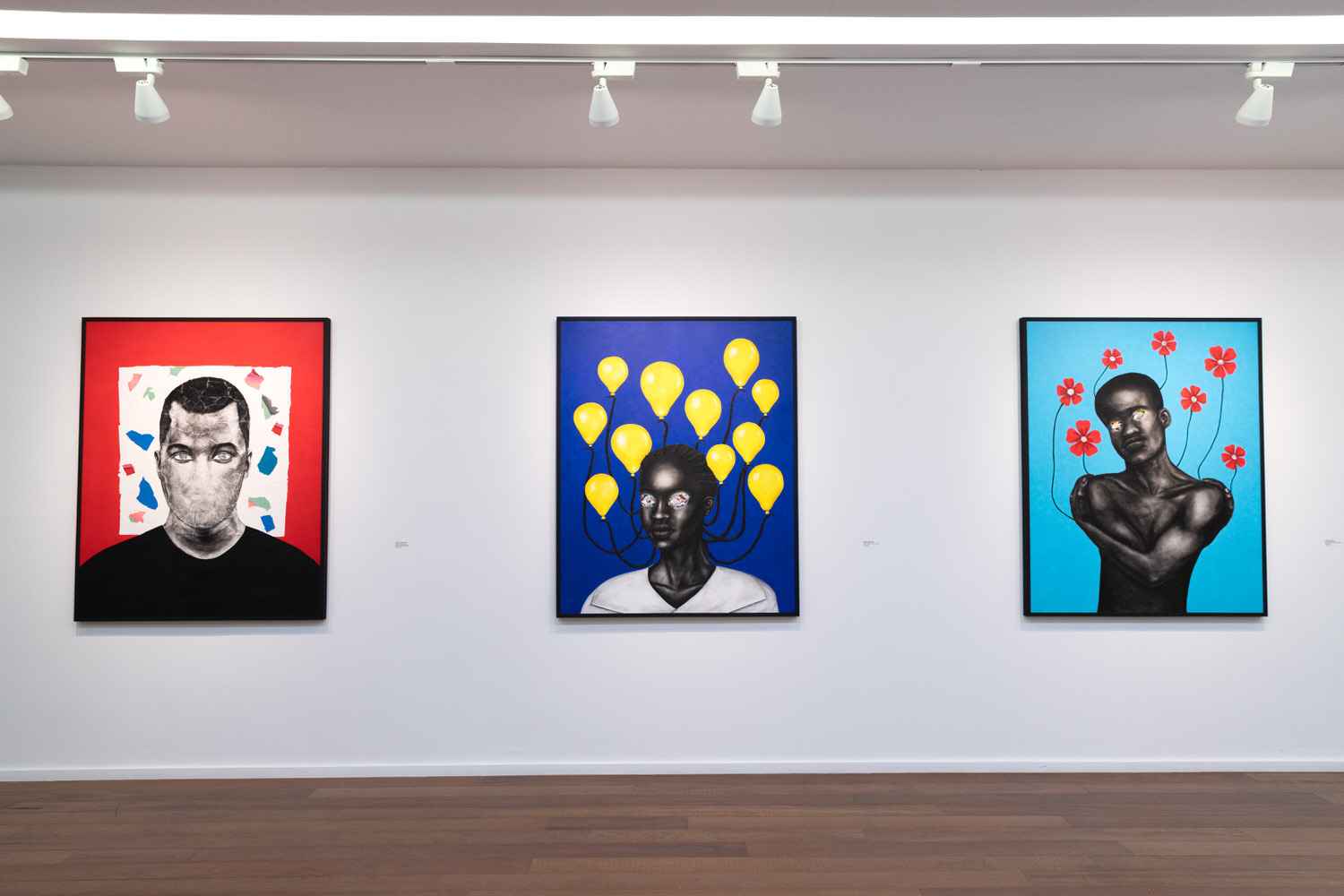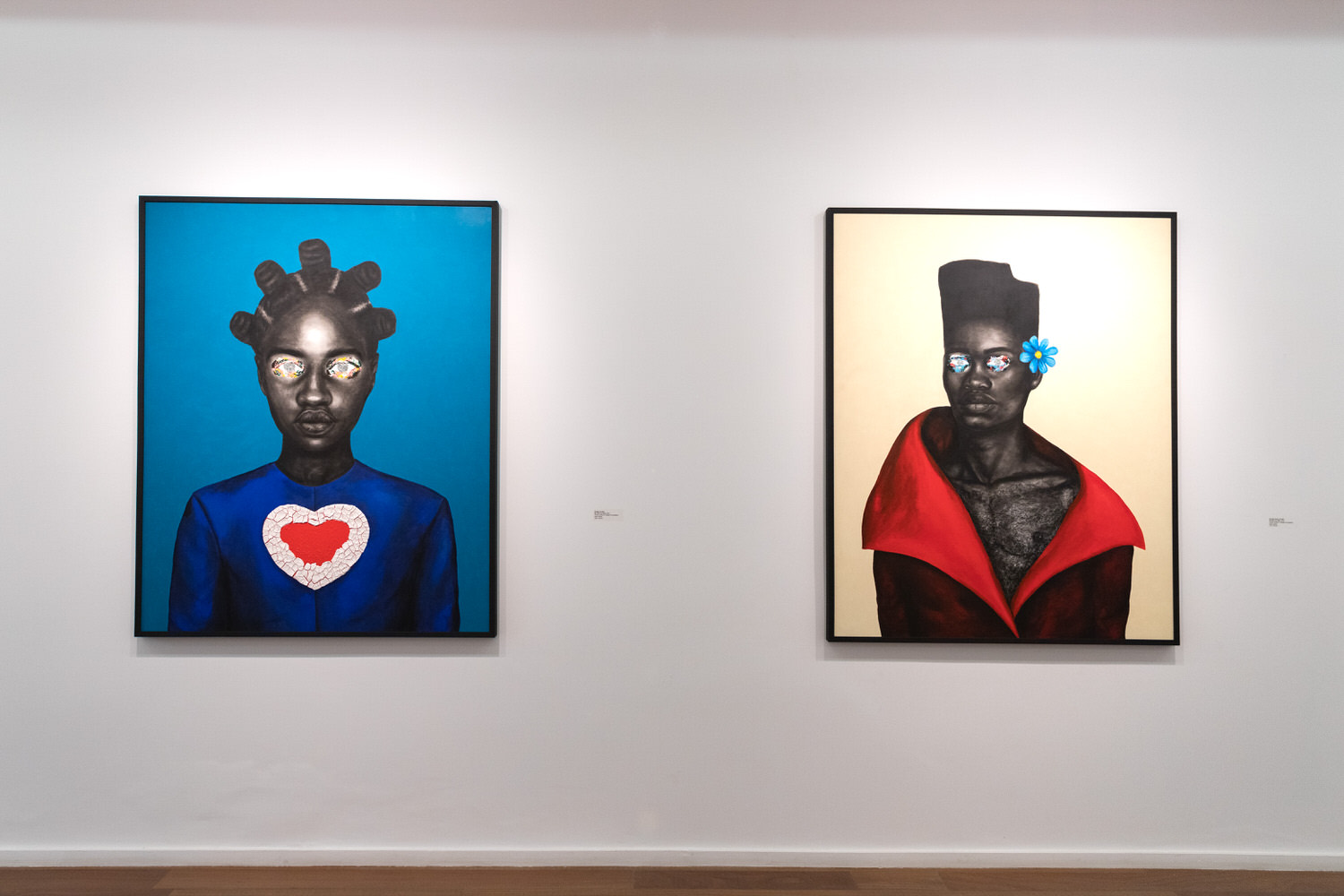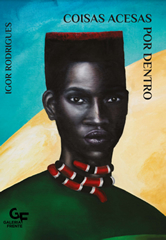Igor Rodrigues
Things That Burn Inside
IGOR RODRIGUES
In his artistic practice, Igor Rodrigues proposes a discussion about Black bodies, reclaiming their place of prominence, not only in society but also within the artistic world itself. With a decolonial practice, his paintings aim to break with the historically perpetuated imagery of violence that still shapes how this social group is perceived. To achieve this, the artist uses an exercise of placing these bodies within a perspective of freedom and healing.
A psychologist by training, Igor understands that creating a space for reimagining worlds for the Black population is becoming increasingly urgent. In 2022, the Ministry of Health reported that the rate of mental disorders among Black adolescents and young people in Brazil is 45% higher than among white people. Data also shows that these risk rates have increased 12% among the Black population in recent years, while remaining stable among white people. Understanding these numbers is essential for society to understand the direct and indirect implications that contribute to such a large discrepancy between different social groups, with structural racism being the main one.
During the construction of his first solo exhibition in São Paulo, Igor created a series of paintings—mostly new works—that address these notions of recreating imaginaries based on a narrative rooted in discussions about invisibility. He also uses a critical reading of colonialism and its effects, as well as an attempt to question society, which, in turn, is linked to the possibility of the emergence of a new protagonism on the part of the Black population, new processes of developing knowledge about themselves and their rights, and new political paths.
Therefore, we used the series Look Me in the Eyes to trace this path proposed by the artist. In it, we see Igor insert a series of resources that expand the notion of painting, including the insertion of texts. But the most direct proposal, which alludes to the series' title itself, is the construction of the characters' eyes made from mirror fragments, which makes me consider two possible readings of these works.
First, the artist raises several questions about his Blackness: "What makes me Black? Is it possible to measure my Blackness?" when he confronts his own work, questioning its themes and discursive propositions. On a second reading, I understand this work as an active dialogue with the viewer, who must look directly into the eyes of the paintings, establishing a relationship, either of affection or of distancing himself from all the implications the image carries.
Throughout the exhibition, we notice that Igor uses resources that, at first, seem quite literal, only to later realize that there are several interpretative layers to his works. In Lágrimas Negras (Black Tears), this resource is clearly present. The paintings carry strings of beads falling from the characters' eyes, which at first glance can be understood as crying or sadness. And they are. But as in Jorge Mautner's lyrics, sadness functions as the other side of the coin of beauty. Or in this case, as if Igor were telling us that for beauty to emerge, or be ignited, we must dive into our depths. And thus we arrive at the exhibition's title. Coisas Licesas por Dentro (Things Lit Inside) deals with this healing process of a population that has always been subjugated and that today seeks to rebuild a place of protagonism, of affection, of access, of reimagining itself as free.
Part of this can be understood in the painting Nós (We), a large panel that occupies the back of the gallery. In it, we observe a couple who sometimes meet, sometimes separate, in a choreographed dance of this search for new ways of perceiving themselves in the world. If at some point in history not only our dignity was taken from us, but also the way we establish our affections, how is it possible to reclaim ways of creating bonds that no longer perpetuate the places of violence created for us?
As Igor brings all these questions to the audience, he instills a journey of recreating these imaginaries. And one of these places the artist found to provide some answers was the appreciation of beauty as an affirmation of self-esteem. However, the artist's paintings display a vivacity of colors. His works, in all their vibrant hues, are intended to illuminate the topics he wishes to discuss.
Most of Igor's works depict women in powerful poses and dressed in luxurious, colorful clothing. Yes, fashion is an important discussion in the artist's work, so this is one of the resources for reclaiming empowerment. This aesthetic discussion is being revived by a new generation seeking to insert the Black population into a contemporary perspective that clothing is behavior. Therefore, it is part of a construction of the social imaginary, which reminds me of the important work of Malian photographer Seydou Keïta in recording Mali's customs during a transition from rural to urban life and also throughout its independence, which occurred in 1960. A record of time capable of redefining how we perceive the world and especially how we perceive ourselves in relation to differences.
Thus, Igor Rodrigues' work establishes these parallels with the history we have been told and the one that needs to be rewritten from now on. If throughout the exhibition he confronts us with so many desires for change, what role do we play in ensuring that these images occupy their places of freedom in a world that still insists on oppressing them? If sadness is beauty erased by suffering, Igor points out that the path now is for beauty to be things lit from within. And so be it!
Carollina LaurianoCurator
